Watch following YouTube video about biological control of aphids with parasitic wasps:
What is organic insect pest control?
Organic pest control is a method in which beneficial bugs such as parasitic wasps, predatory insects and mites, and plant-based products are used for the control of insect pests of various crops. These biological and plant-based products are not harmful to the humans, pets, wild animals or the environment.
What are Aphids?
Aphids are very small pear-shaped, soft-bodied insects and about 1 to 10 mm long with piercing and sucking types of mouthparts, and long antennae and legs. Baby aphids are called as nymphs that look like their parents. There are over 4000 species of aphids have been described from all over the world but they differ in color from black, brown, red (Photo 1) green (Photo 2), and pink in color. Both adults and nymphs have two tubular structures called as cornicles that are projected backward out of posterior end of their bodies. These cornicles are used for the excretion of defensive fluids.
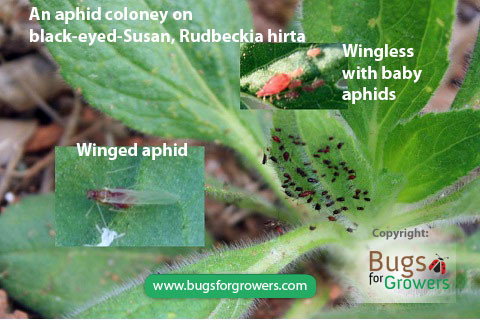
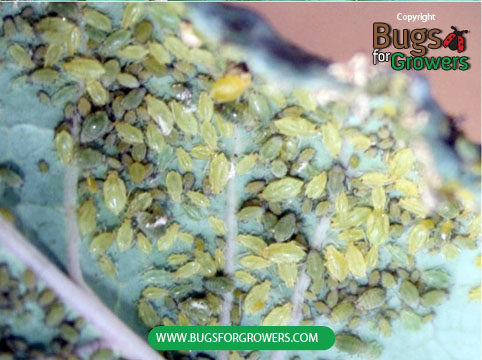
Damage caused by Aphids
Both adults and nymphs of aphids cause direct and indirect damages to many plant species such as ornamentals, field crops, greenhouse vegetables, fruits, weeds and grasses.
Direct damage
Both adults and nymphs of aphids directly feed on the succulent plant parts including buds, flowers, twigs and leaves using their piercing and sucking types of mouthparts. During direct feeding, aphids suck juice from tender plant tissues and cause symptoms like yellowing and curling of infested leaves (Photo 3), stunted plant growth and reduced crop yields.
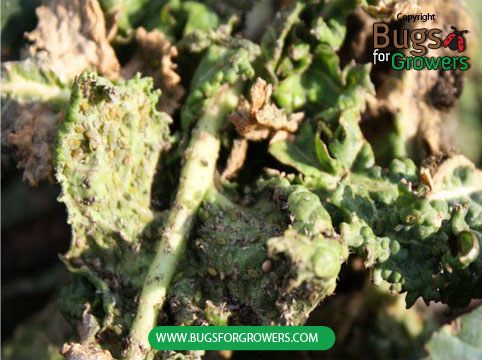
Indirect damage
While feeding on the leaves, aphids also secrete honeydew (Photo 4) that stimulates the growth of black sooty mold (Photo 5) on the plant surfaces and causes indirect damage to host plants. This black sooty mold (Photo 5) can cover entire leaf surface and affect the photosynthesis, a process used by plants to convert sunlight energy to chemical energy for the synthesis of their own food such as carbohydrates and proteins. The growth of the black sooty mold also reduces the quality of the produce and aesthetic value of many ornamental plants.
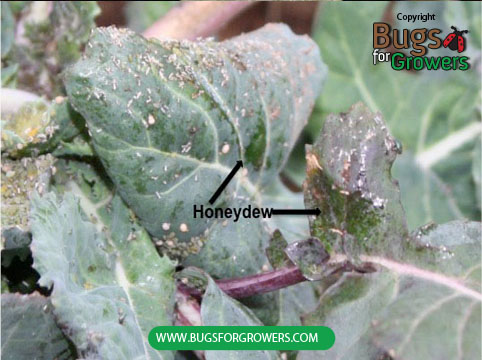
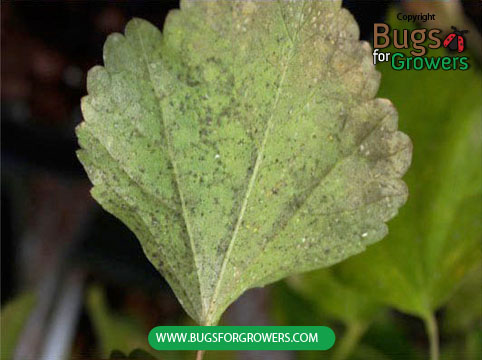
Transmission of virus diseases
Aphids are vectors of many types of viruses that are transmitted by them from plant to plant. These viruses cause different types of diseases including bean common mosaic virus, carrot virus Y, celery mosaic virus, cucumber mosaic virus, lettuce mosaic virus, papaya ringspot virus, potato virus Y, turnip mosaic virus, watermelon mosaic virus and zucchini yellow mosaic virus. The major symptom by these virus diseases include yellowing and curling of leaves, reduced plant growth and crop yields.
Organic Control of Aphids with parasitic wasp, Aphidius colemani
What are Aphidius colemani wasps?
Aphidius colemani are tiny about 2-3 mm long wasps with slender body, yellowish abdomen and legs, black head and thorax, and whitish wings. Adults of Aphidius colemani (Photo 6) parasitize aphids by laying eggs with their ovipositor inside the body of aphids. Within aphid body, wasp eggs hatch into young larvae that start feeding on the body content of aphids, complete their development and pupate within the dead aphid bodies that then turn into crispy mummies. Within 14- 15 days, adult wasps emerge from mummies and then search for new aphid colonies to parasitize aphids. These wasps are now commercially produced and sold as aphid mummies containing wasp pupae with ready-to-emerge adult wasps.
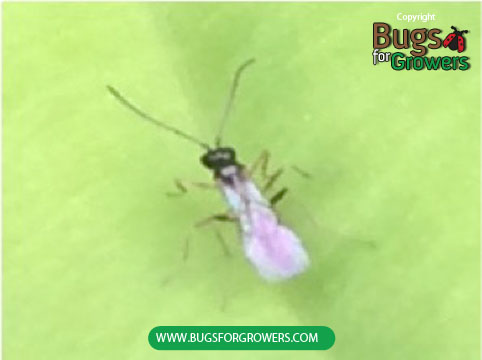
Why Aphidius colemani wasps are used for the organic control of aphids?
Parasitic wasp, Aphidius colemani are used for the organic control of aphids because they can control over 40 species of aphids by killing and feeding on them but they are harmful to the workers, pets, wild animals or the environment.
How does Aphidius colemani wasp kill aphids?
When adult Aphidius colemani wasps are released in the aphid infested organic gardens, greenhouses or fields, they start looking for a suitable size aphids for egg laying using their antennae. After finding an appropriate size aphid is found, female wasps lay eggs inside aphid’s body using their ovipositors. Eggs hatch within the aphid body into small young larvae that start feeding on the body content of aphid, complete their development, kill aphid and pupate within the dead mummified bodies of aphids (Photo 7).
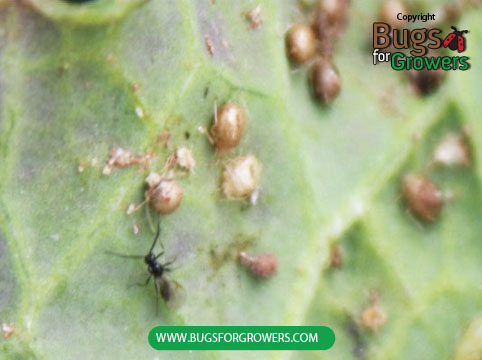
How Aphidius colemani wasps should be released in organic gardens?
Aphidius colemani wasps are supplied as aphid mummies (Photo 7) with ready-to-emerge wasp adults (Photo 8). Adult wasps are allowed to emerge from aphid mummies inside the vials from which they can be easily released in the organic gardens or greenhouses by following two simple steps given below for the management of aphids.
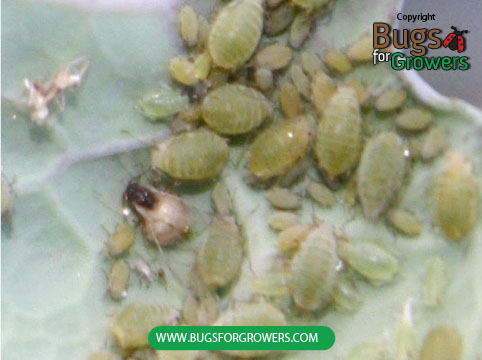
- First, take a vial containing wasp adults into the aphid infested garden, then open the vial, hold it at 45o angle, then begin walking throughout the garden and while walking, keep tapping on the vial so that the adult wasps will escape from vial and spread evenly in the garden. Repeat this procedure until all wasps are escaped from the vials. If some mummies are still intact in the vial, then tie that opened vial to a branch of a plant so that adult wasps will escape from the vial as they emerge from mummies.
- Second way to release wasps in the garden is to tie opened vial directly to a branch of a plant that is heavily infested (hotspots) with aphids for 3- 4 days. During this time, adult wasps will emerge from mummies, escape from the vial and seek aphids to lay eggs in their bodies. Repeat this wasp distribution method by moving and tying vial at different locations within the garden until all wasps are emerged from mummies and escaped in the garden.
How many Aphidius colemani wasps should be released in organic gardens?
Preventive treatment: As a preventive treatment, release about 5 adult wasps per 100 square foot area weekly.
Curative treatment: As a curative treatment (in hot spot), release about 20- 25 adult wasps per 100 square foot area weekly.
